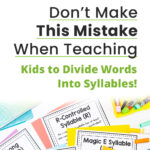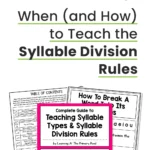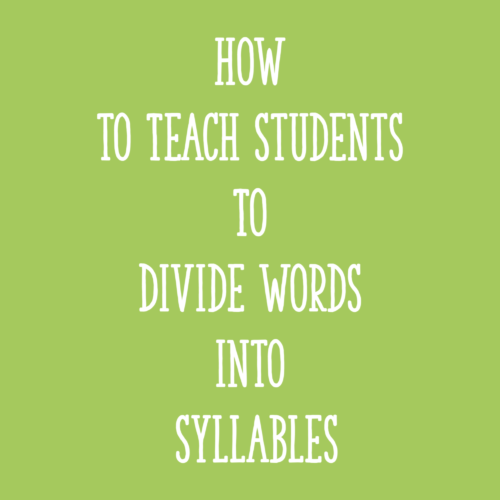Teaching students to use the syllable division rules to break up multisyllabic words can be tricky. However, knowing the syllable division rules makes it so much easier for kids to accurately decode longer words!
When students stumble through or misread multisyllabic words, this can negatively impact their comprehension. This is why it’s so important to devote time to teaching the syllable division rules, plus concepts like open syllables and closed syllables!
In this post, I’m sharing fun ideas for teaching the syllable division rules. These activities are best for first grade, second grade, and third grade students who are learning how to divide words.
Activities for Teaching the Concept of a Syllable
To help students understand what a syllable is, you can explain that a syllable is a “beat” in a word. All words have at least 1 syllable.
Syllables can be clapped. You can also count syllables by placing your open hand horizontally, beneath your chin. Every time you feel your chin drop, that’s 1 syllable. Every syllable must have at least 1 written vowel.
Activities that teach kids to count syllables are a great place to start:

You might also have students complete a number of syllables sort:

Both of these activities come from my Complete Guide to Teaching Syllable Types & Syllable Division Rules.
What’s important to know (and to teach your students!) is that the way we hear syllables is not always how they should be divided in written form. For example, some people would say the syllables in the word “butterfly” as “butt-er-fly,” but in reality, the division is: “but/ter/fly.”
So while the activities above are great to give students an overall concept of what syllables are, it’s still very important to teach the written rules. This is what we will discuss next!
Activities to Teach the VC/CV Syllable Division Rule
The first rule I teach my students (usually in first grade), is that when there are two consonant sounds between two vowels, we should divide the word between the consonant sounds.
I teach my students to find and circle the vowels in the word first (notice how they are labeled V for vowel in the example with “sunset” below), and then look at the consonants between the two vowels (in this case, n and s). The word is divided between the two consonants, the n and s: sun/set.

Compound words are a great place to start when teaching the VC/CV syllable division rule.
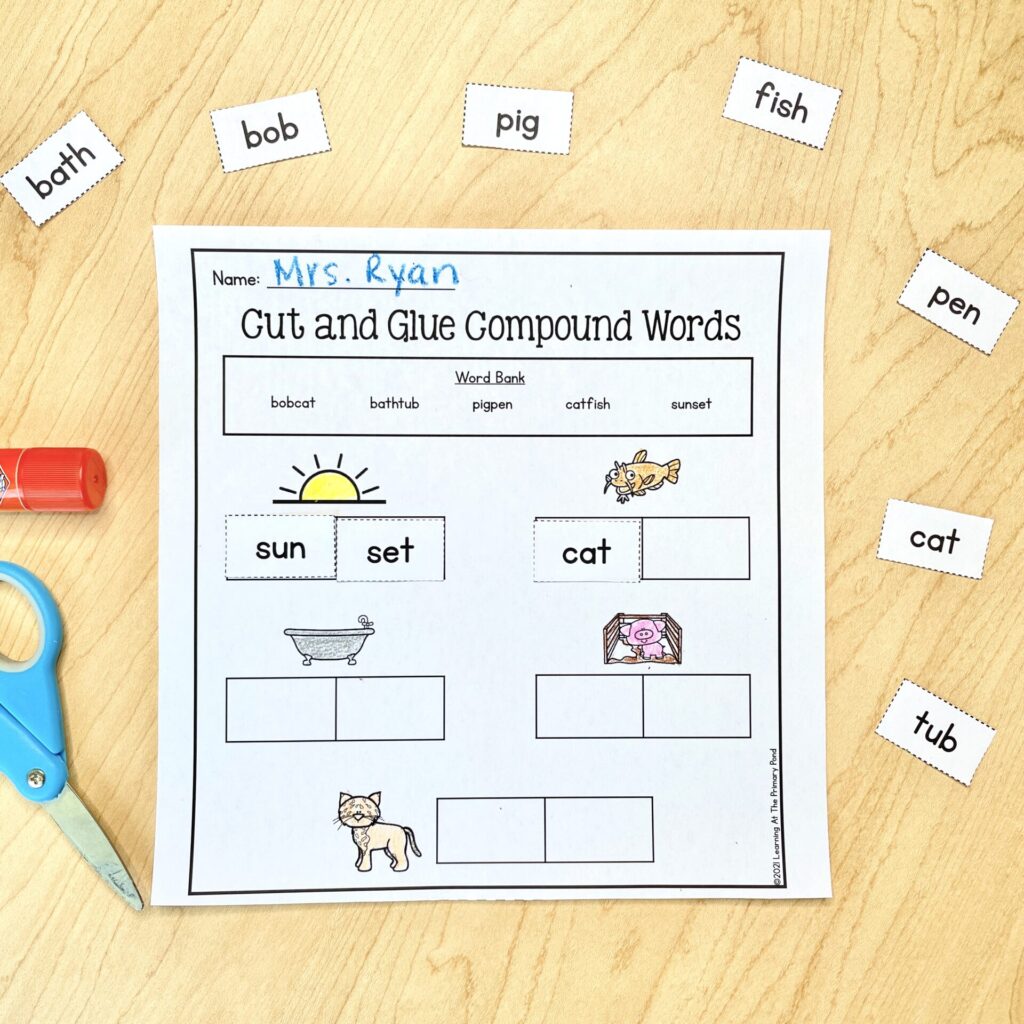
The poster below (which you can grab in my Syllables Teaching Guide) shows that this rule can also apply to words that have three written consonant letters between the vowels.
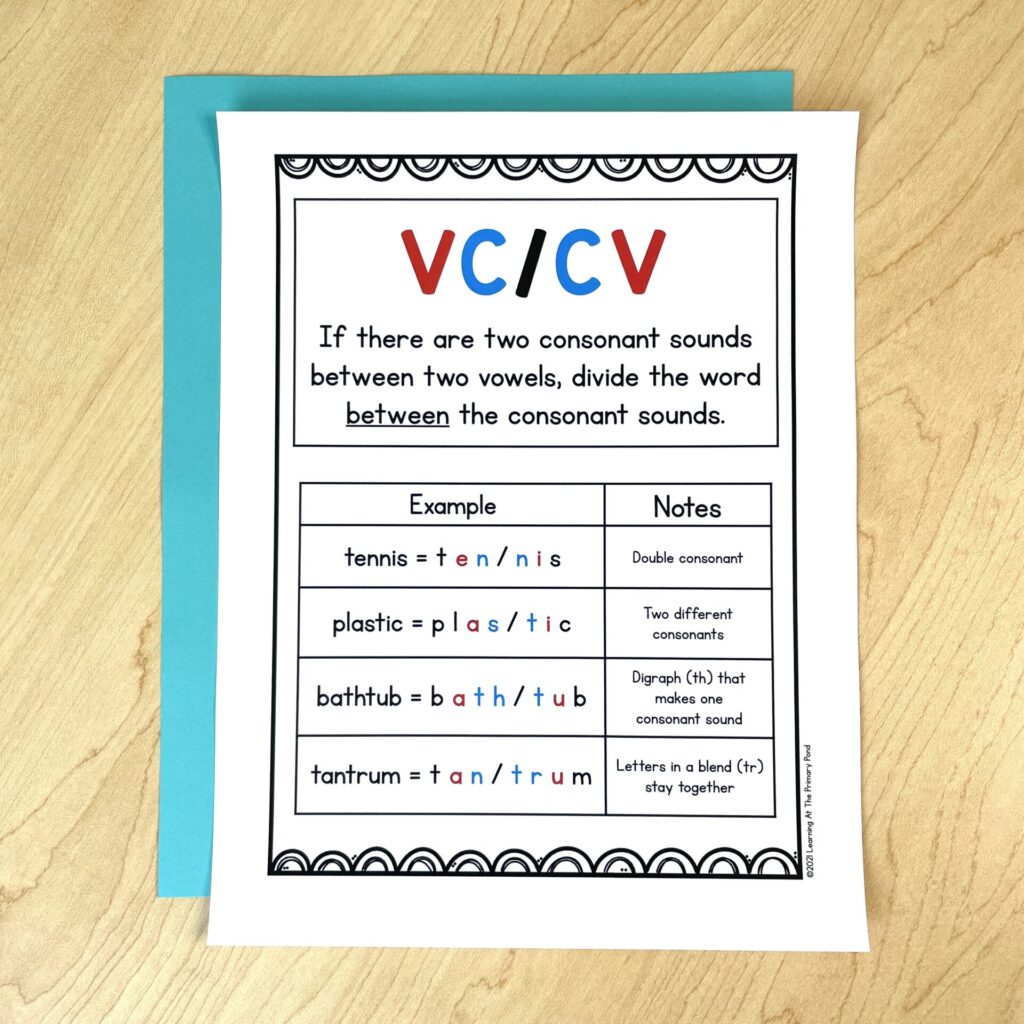
In the word “bathtub,” the t and h are working together to make one consonant sound, /th/. So we keep them together and divide the word like this: bath/tub.
In the word “tantrum,” there are 3 distinct consonant sounds for the n, t, and r. However, the t and r are a common consonant blend, so we keep them together: tan/trum.
The consonant blends rule can be tricky, so the most important thing you can do is to teach kids to be flexible. Your main goal is for them to learn to break up and decode multisyllabic words, so don’t get too bogged down in tiny details. If they (or you!) aren’t sure of the exact division because they aren’t sure which letters to keep together as a blend, but they can still read the word, that is good enough!
Activities to Teach the V/CV Syllable Division Rule
Before you teach this rule, students need to understand the concept of an open syllable and a closed syllable.
An open syllable ends with one long vowel. For example, the word “veto” is made up of two open syllables: ve/to.
A closed syllable ends with a consonant and has one vowel. That vowel is usually a short vowel. The word “cactus” is made up of two closed syllables: cac/tus.
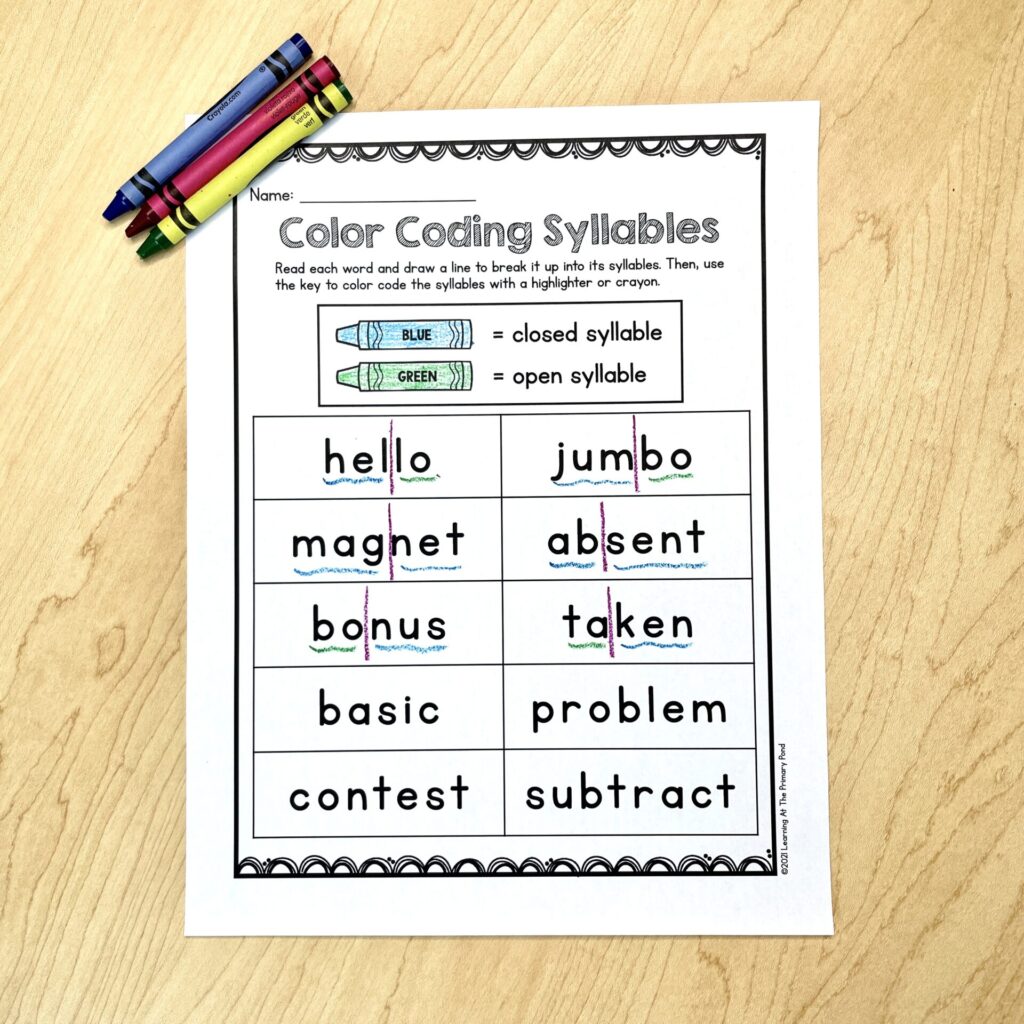
Once students understand these concepts, you can teach the V/CV syllable division rule.
This rule states that if there is only one consonant sound between the vowels, first try dividing the word before the consonant. This makes the first syllable open, with a long vowel sound.

Using the V/CV syllable division rule is really helpful to kids in figuring out how to pronounce the vowel sounds in a multisyllabic word. In the word “robot,” which is divided like this: ro/bot, the first o has a long o sound, because it is in an open syllable. The second o has a short o sound, because it is in a closed syllable that ends with a consonant.

The tricky thing about the V/CV rule is knowing when to use it. Sometimes, when there is just one consonant sound between the vowels, you actually use a different rule…
Activities to Teach the VC/V Syllable Division Rule
The VC/V syllable division rule states that if there is only one consonant sound between the vowels, but making the first vowel long by dividing V/CV does not yield a real word, divide the word after the consonant, instead. Then the first vowel will be short instead of long.
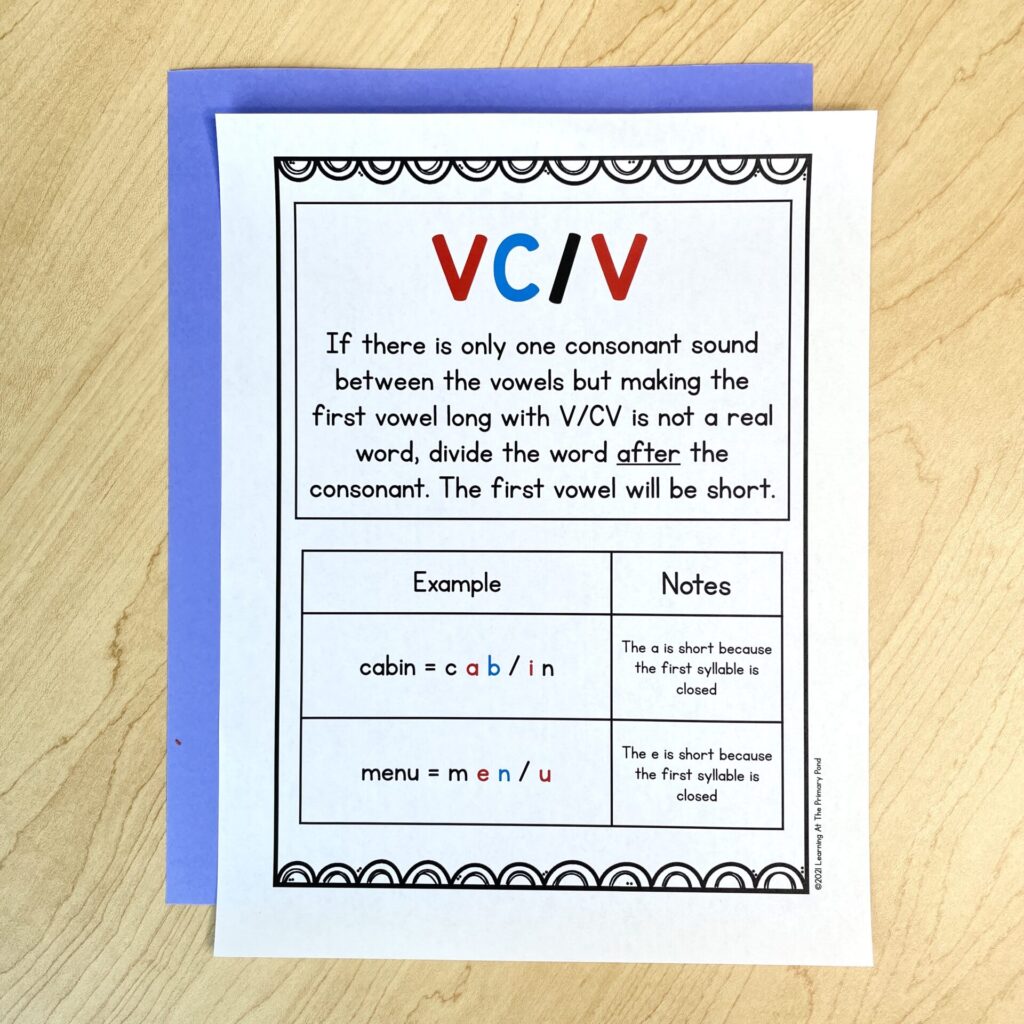
Let’s take the word “comet” as an example. The first rule we should try is V/CV. But if we divide the word up that way, it becomes: co/met. The first syllable is open, because it ends with a vowel, which means the vowel should be long. “That’s “koh-met” with a long o is not a real word!
This indicates to us that we should try the VC/V rule instead. Now the o is part of a closed syllable, which usually means it’s a short vowel. When we pronounce it com/et, that yields a real word.
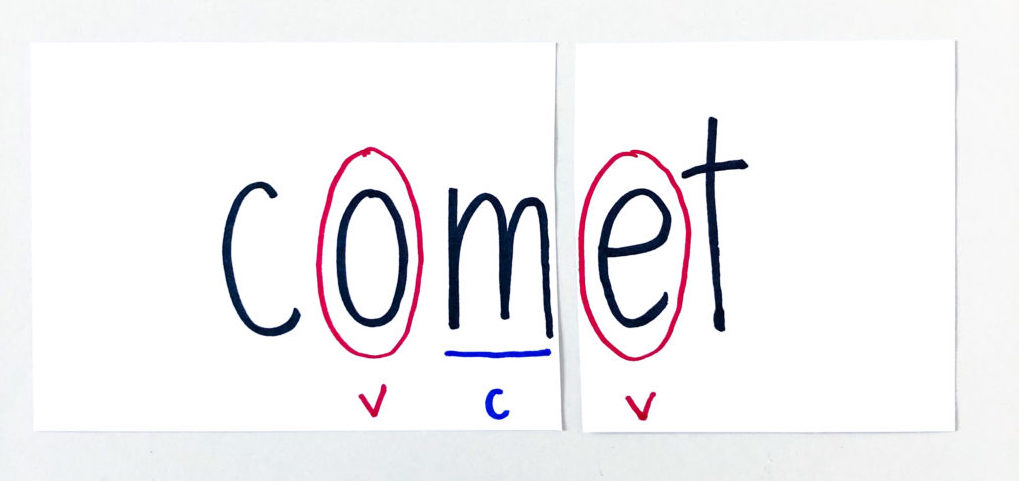
The only way to know if a word should be divided as V/CV or VC/V is to experiment. Lots of practice activities are key!
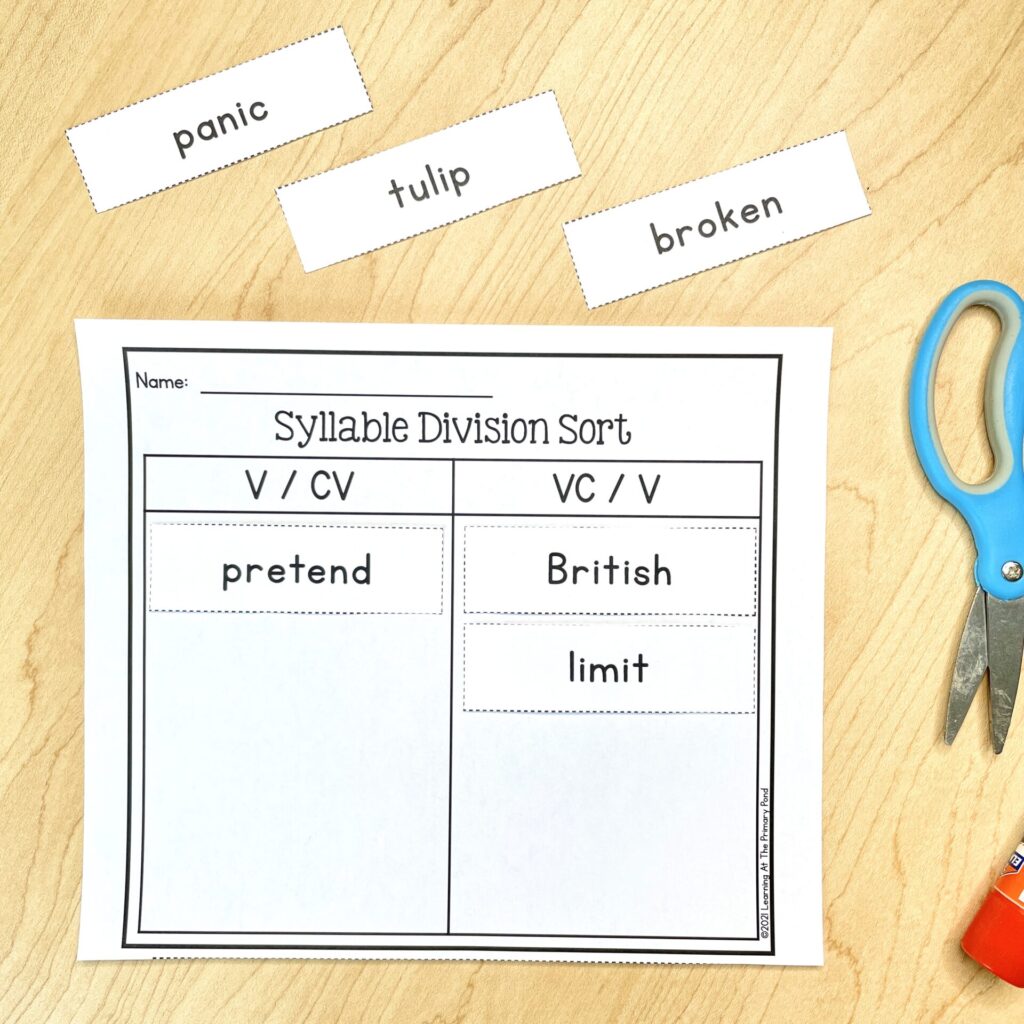
Activities to Teach the V/V Syllable Division Rule
Last but not least, we have the V/V rule. This rule states that if two vowels that do not work together as a vowel team or diphthong are next to each other, divide the word between those two vowels.
For example, the word “diet” has two vowels together. The i and e are not working together like they would in the word “pie;” you can hear the sound of each vowel.
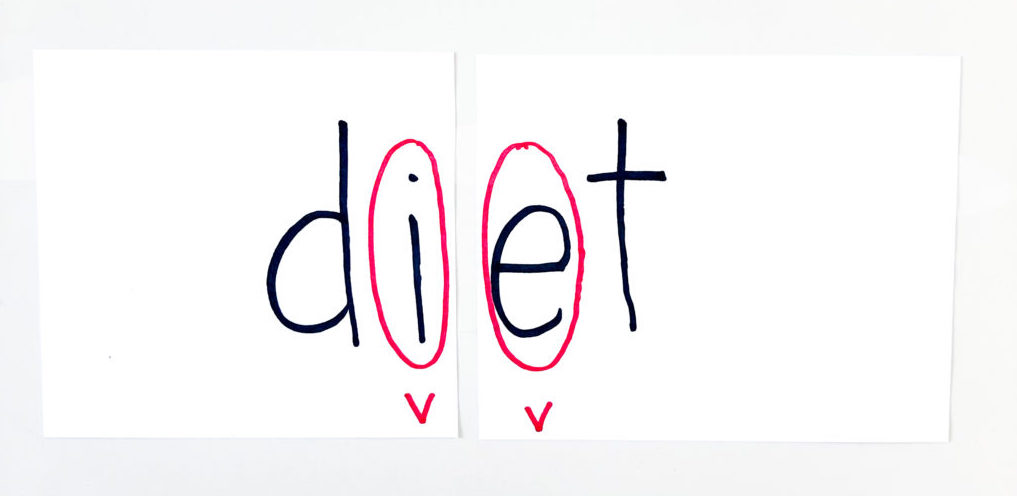
I don’t tend to teach this syllable division rule until third grade. Students need to have a solid mastery of vowel teams and diphthongs before they can master this rule. They also need to have the mental flexibility to try dividing the word in different ways until they figure it out!
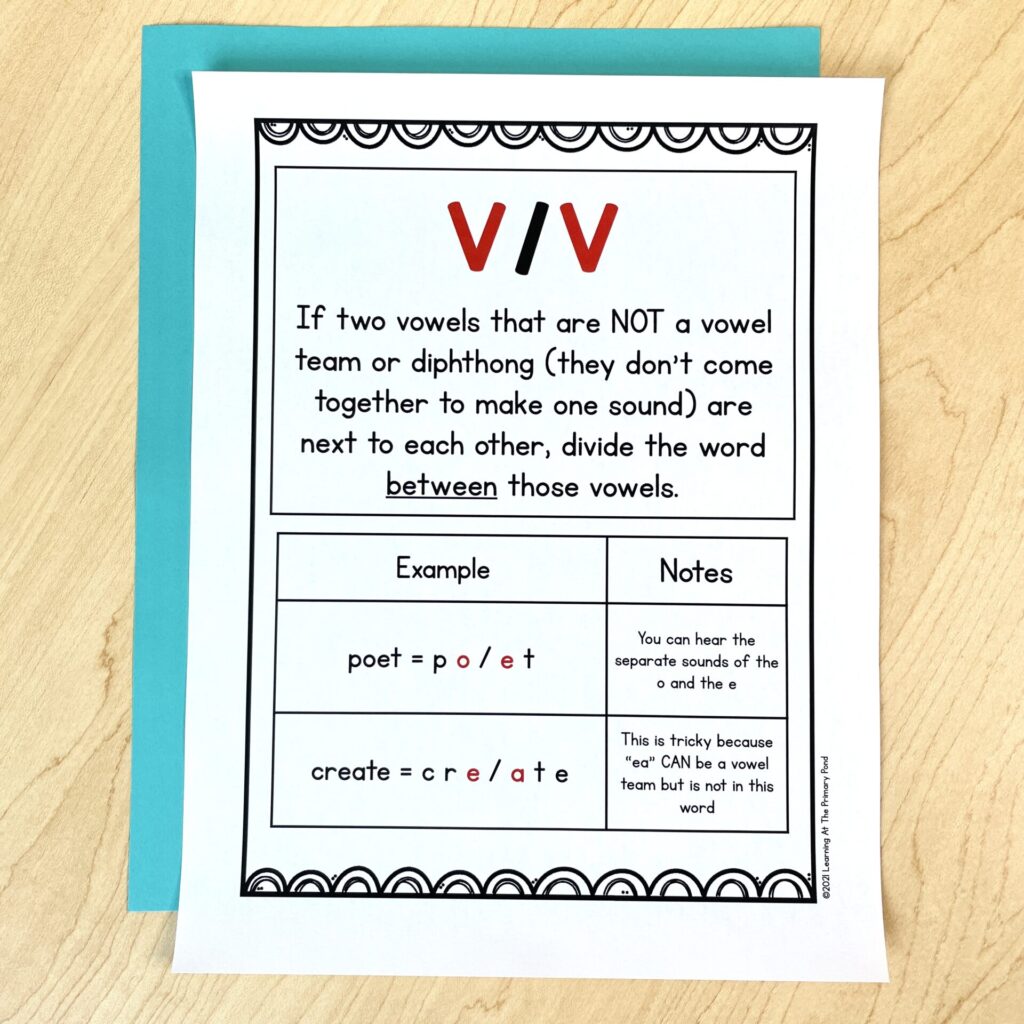
Flexibility Is Key!
Teaching syllable division can be a lot, especially if you’ve never taught it before! Plus, there are always weird exceptions in words, so it can be easy to get confused or wrapped up in the details.
The most important thing to keep in mind is your ultimate goal: for students to be able to decode multisyllabic words. I always emphasize to my kids that if they try breaking up a word one way and it doesn’t help them decode it, try breaking it up another way and/or changing the vowel sounds.
In addition to everything I’ve shown here, there are some other concepts (like the syllable types and words with 3+ syllables and what to do with glued sounds and inflectional endings) that are also very important to know.
However, you don’t need to be overwhelmed or try to figure it out on your own! My Complete Guide to Teaching Syllable Types & Syllable Division Rules breaks it all down for you and makes it EASY to teach even if you’ve never taught syllables before!
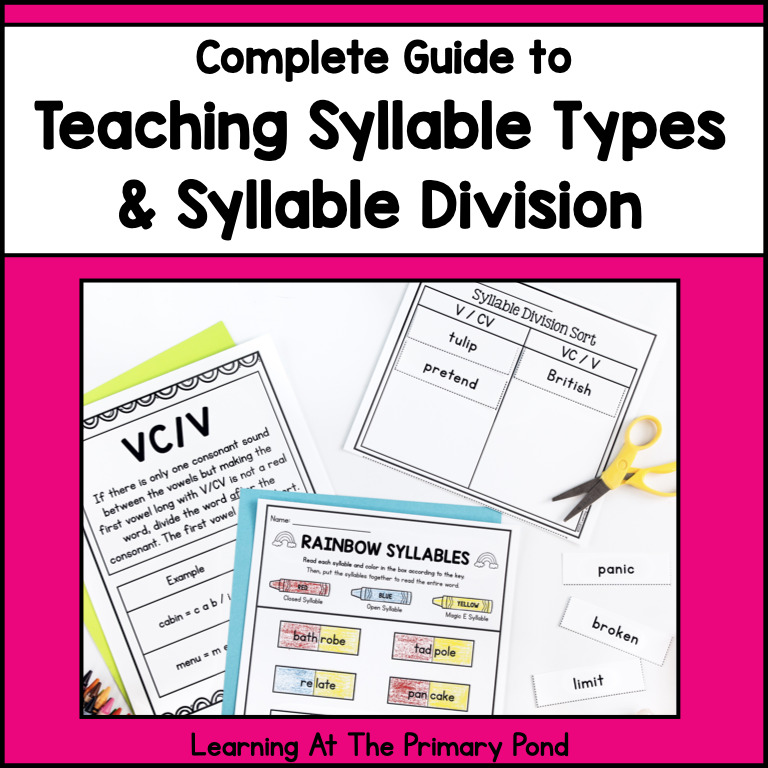
Save These Syllable Division Activities
If you’d like to find these activities later, save this post! Add the pin below to your Pinterest account. That way, you’ll be able to quickly find these syllable division activities later, when you’re ready to teach them!
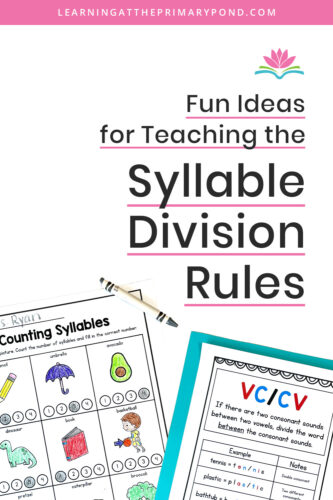
Happy syllable teaching!

